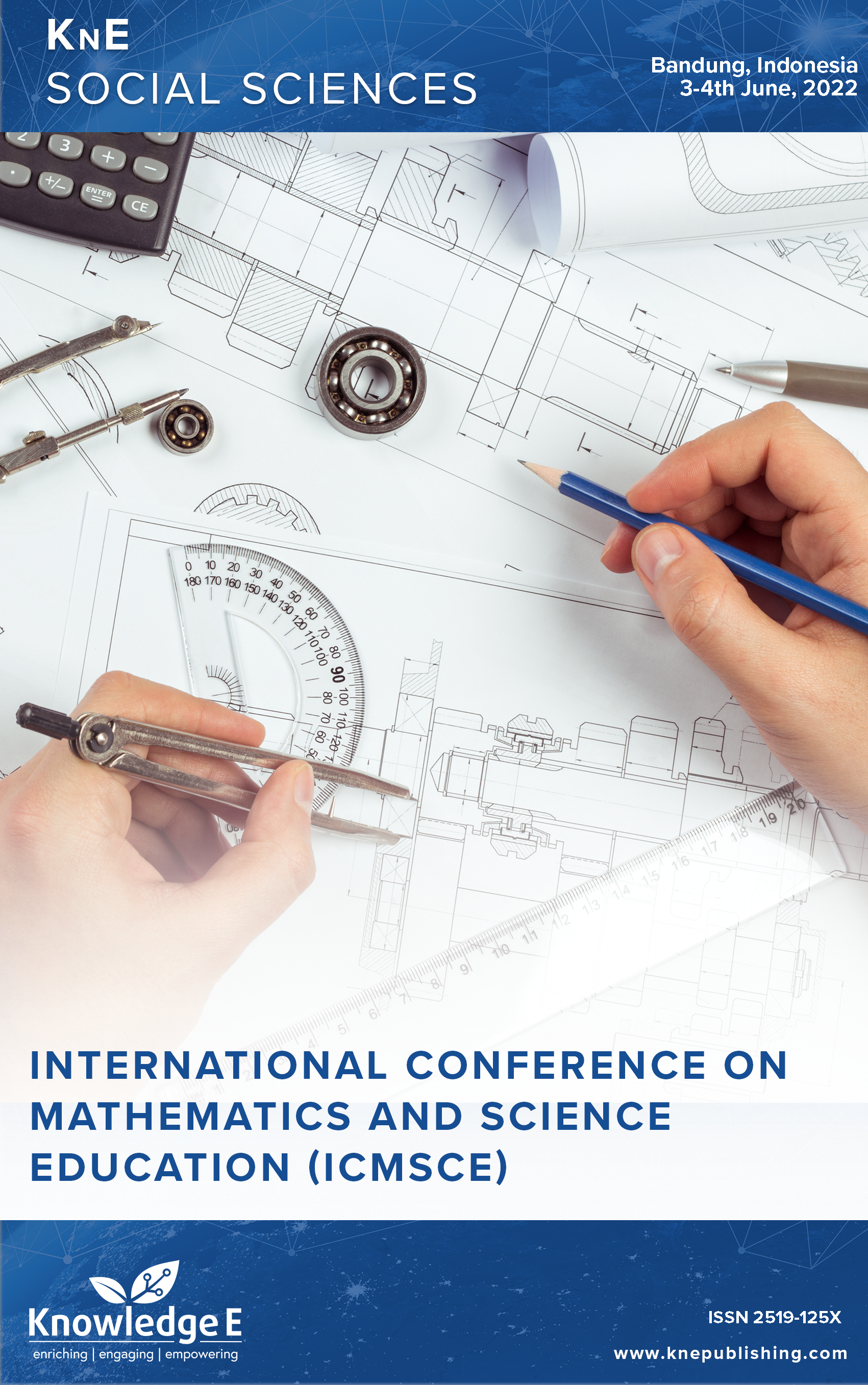Teaching Learning Sequence About Green Chemistry and Eco-Batteries: A Results from Qualitative Content Analysis
DOI:
https://doi.org/10.18502/kss.v9i13.15997Abstract
Batteries can generate electricity as direct current through and electrochemical process called and oxidation-reduction. Batteries can be converted into eco-batteries so that they are able to provide supplies for the community to create energy from renewable sources. This is in accordance to the aspect of green chemistry that can be integrated into learning. This study aims to obtain produce concept maps and Teaching Learning Sequences (TLS) from scientist’s conceptions in the context of eco-batteries. The method used in this research is qualitative content analysis using literature analysis. The literature used in the qualitative content analysis is in the form of textbooks, review articles and research articles. The instrument used in this study includes a content analysis format, which is described descriptively to build students understanding of the principles of green chemistry in the context of eco-batteries. The results showed that the concept map and TLS agreed on the relationship between green chemistry, content and context were found that eco- batteries are an alternative to overcome pollutants from fossil fuels by utilizing the principles of green chemistry. TLS describes the learning flow with several sequencing, 1) fossil fuels, 2) definitions and components in batteries, 3) redox reaction materials 4) examples of Eco-batteries oriented to green chemistry. Eco-batteries in learning can integrate redox concepts that involve aspects of green chemistry, using renewable raw materials and safe chemical products. The results of concept maps and TLS in this study can be used as a basis for designing of teaching material and lesson design.
Keywords: Teaching Learning Sequence, Green Chemistry, Eco-Batteries
References
Chen GQ, Wu XF. Energy overview for globalized world economy: source, supply chain and sink. Renew Sustain Energy Rev. 2017;69:735–49. DOI: https://doi.org/10.1016/j.rser.2016.11.151
Dominic A. Erratum: contribution of li-ion batteries to the environmental impact of electric vehicles. Environ Sci Technol. 2010;44(19):7744. DOI: https://doi.org/10.1021/es1029156
B. Jespersen and Hystlop, Chemistry The Molecular Nature Of Matter.
Soedibyo S, Ridwan M, Febranzah A, Pradipta A. Modelling and control system design of modified zeta converter with coupled inductor - capacitor for seawater battery application. Journal on Advanced Research in Electrical Engineering. 2017;1(1):1–7. DOI: https://doi.org/10.12962/j25796216.v1.i1.3
Burmeister M, Rauch F, Eilks I. “Education for Sustainable Development (ESD) and chemistry education.,” Chemistry Education Research and Practice journal. vol. 13, no. 2, pp. 59–68, 2012. https://doi.org/10.1039/C1RP90060A. DOI: https://doi.org/10.1039/C1RP90060A
B. Jespersen and Hystlop, Chemistry The Molecular Nature Of Matter.
C. Desha, K. Hargroves, and A. Farr, “Chemistry innovations in sustainable development,” (2011).
Holfelder AK. Towards a sustainable future with education? Sustain Sci. 2019;14(4):943–52. DOI: https://doi.org/10.1007/s11625-019-00682-z
Schroeder NL, Nesbit JC, Anguiano CJ, Adesope OO. Studying and constructing concept maps: a meta-analysis. Educ Psychol Rev. 2018;30(2):431–55. DOI: https://doi.org/10.1007/s10648-017-9403-9
Kremer R. “Concept mapping tool to handle multiple formalisms.,” In AAAI Spring Symp. Artificial Intelligence in Knowledge Management. no. SS-97-01, p. 1997.
Viennot L, Rainson S. Design and evaluation of a research-based teaching sequence: the superposition of electric field. Int J Sci Educ. 1999;21(1):1–16. DOI: https://doi.org/10.1080/095006999290804
Sibanda D. What sequence do we follow in teaching concepts in chemistry? A study of high school physical science teachers’ PCK. African Journal of Research in Mathematics, Science and Technology Education. 2018;22(2):196–208. DOI: https://doi.org/10.1080/18117295.2018.1484408
Ghirardi M, Marchetti F, Pettinari C, Regis A, Roletto E. A teaching sequence for learning the concept of chemical equilibrium in secondary school education. J Chem Educ. 2014;91(1):59–65. DOI: https://doi.org/10.1021/ed3002336
Giordano C. “Design of Teaching / learning Sequences for the Chemistry Curriculum According to and Inquiry-Based Approach.,” Firenze University Press. vol. 16, no. 1, pp. 238–248, 2016.
Mayring P. Qualitative content analysis: Theoretical foundation, basic procedures and software solution. Klagenfurt, Austria: Gesis; 2014. DOI: https://doi.org/10.1007/978-94-017-9181-6_13
S. Seuring, M. Müller, M. Westhaus, and R. Morana, “Conducting a literature review-The example of sustainability in supply chains.,” Research Methodologies in Supply Chain Management. pp. 91–106, 2005. https://doi.org/10.1007/3-7908-1636- 1_7. DOI: https://doi.org/10.1007/3-7908-1636-1_7
Ramdhani A, Ramdhan MA, Amin AS. Writing a literature review research paper: astep-by step approach. International Journal of Basic and Applied Science. 2014;3(1):47–56.
Dühnen S, Betz J, Kolek M, Schmuch R, Winter M, Placke T. “Toward green battery cells: perspective on materials and technologies.,” Small Methods. vol. 4, no. 7, p. 2020. DOI: https://doi.org/10.1002/smtd.202000039
Kim T, Song W, Son DY, Ono LK, Qi Y. Lithium-ion batteries: outlook on present, future, and hybridized technologies. J Mater Chem A Mater Energy Sustain. 2019;7(7):2942– 64. DOI: https://doi.org/10.1039/C8TA10513H
Nitta N, Wu F, Lee JT, Yushin G. Li-ion battery materials: present and future. Mater Today. 2015;18(5):252–64. DOI: https://doi.org/10.1016/j.mattod.2014.10.040
Nurjamil AM, Wolio NA, Laila RN, Rohmah SA, Nandiyanto AB, Anggraeni S, et al. Eco-friendly batteries from rice husks and wood grain [AJSE]. The ASEAN Journal of Science and Engineering. 2021;1(1):45–8. DOI: https://doi.org/10.17509/ajse.v1i1.33768

